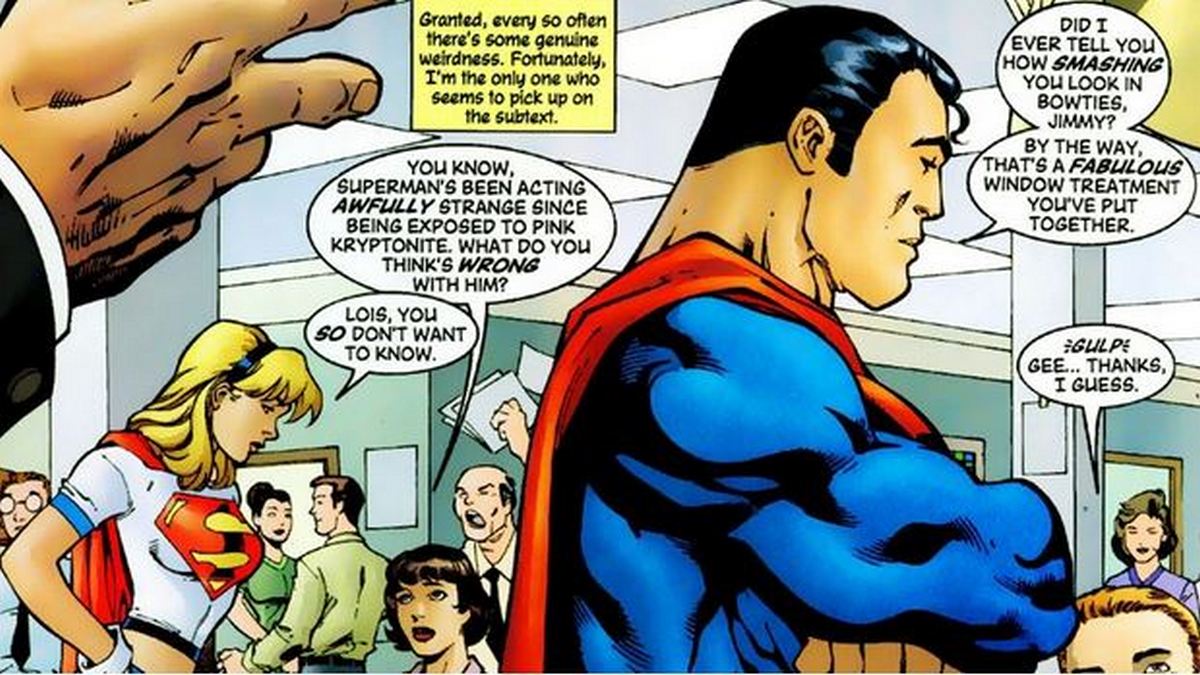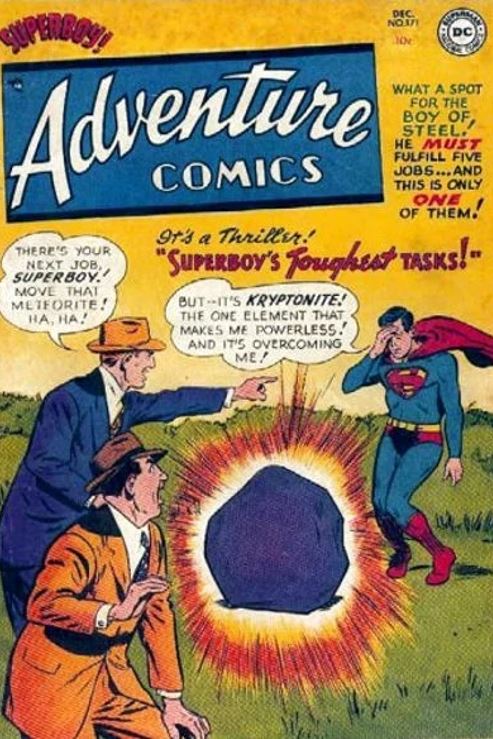Here Is What Pink Kryptonite Does to Superman

We all think green when someone says Kryptonite, but there’s a whole rainbow of different types of K-stone, each with a unique effect on Superman. However, one of the most baffling, controversial types of the stone ever introduced in DC Comics has to be Pink Kryptonite. So, what does Pink Kryptonite do to Superman?
Pink Kryptonite changes Superman’s sexual orientation and has the same effect on other Kryptonians. Pink Kryptonite resulted in Supes being heavily implied to be homosexual with some baffling stereotypical lines. There’s also a version of Pink Kryptonite that changes Superman’s gender.
The introduction of Pink Kryptonite was actually satyrical, but it still bewilders readers that the writers even had the idea in their minds. So, without further ado, here’s everything you need to know about Pink Kryptonite, what it is, how it works, and whether there are any alternative versions worth mentioning.
What is Pink Kryptonite?
Pink Kryptonite is a type of Kryptonite that first appeared in ‘Supergirl Vol. 4’ #79 in 2003 and never returned to comics again. It was an odd introduction to the Kryptonite rainbow that still raises readers’ eyebrows today, despite it being almost 20 years since it happened.
As Pink Kryptonite only appears once in the comics, not much background info is given about it in a single panel. It’s unclear if Pink Kryptonite is a natural variant of the rock from Krypton that went through certain changes while floating through space.
Remember, the same happened with Red Kryptonite, which was once green but passed through a misty red space cloud, changing color and properties. White Kryptonite was also once the regular Green K but turned white during its journey.
On the other hand, it’s possible that Pink K was artificially created like numerous other types of Kryptonite, but there’s nothing to suggest who or why would create such a… peculiar type of Kryptonite. Why, you might ask? Well, due to its bizarre effects.
What does Pink Kryptonite do to Superman?
Green K hurts Superman, Silver K gets him high, Gold K strips him of his powers. And then, there’s Pink Kryptonite.
Pink K appeared only once, and it seems to have the effect of turning Kryptonians gay, as it seemingly did to Superman when he was exposed to it. The writers intended it to be a satire of Silver Age comics and their plots, but they did it in such a blatantly stereotypical way that it still baffles and amuses readers.
To show Superman was now homosexual, he immediately compliments Jimmy Olson’s fashion choices, starts hitting on him, and calls stuff fabulous. Yup, being gay seems to change your personality instantly. Nobody gave it much since it was obviously satire, but seeing the panel out of context is quite amusingly bizarre.
It is, however, unclear what Pink Kryptonite would do to Kryptonians that were already homosexual. Would it have a reverse effect, turning them heterosexual? If so, then what about bisexual Kryptonians? Do they start liking both genders more? Or less? It’s wild, y’all. Luckily, Pink K never appeared in the comics again.
It did, however, appear in an episode of ‘Justice League Action’ short animations called ‘True Colors.’ Here, the Kryptonite heart of Metallo gets transmuted into Pink Kryptonite by Firestorm. However, it has perhaps an even more bizarre effect on Superman.
You see, after the Man of Steel came into contact with this version of Pink K, he swapped physical genders and became the Woman of Steel. His character remained the same; only his gender had changed.

I mean, we don’t even know if the effects of either version of Pink K are permanent, but I’m guessing it wears off after a while. It’s just a bewildering choice for the writers, and I enjoyed every second of it!
Alternative versions of Pink Kryptonite
As you can see, there weren’t many instances where Pink Kryptonite made an appearance – only two, to be exact. However, some types of Kryptonite might be close enough to be mentioned here.
Purple Kryptonite
The first is Purple Kryptonite, which appeared only once – on the cover of ‘Adventure Comics’ #171 in 1951. It seemingly had the same effects as regular Green Kryptonite but never appeared in the comics again. Seeing how early in Kryptonite’s history it happened, there are two theories about Purple Kryptonite.

The first theory would be that Purple Kryptonite is an incredibly rare type of Kryptonite that’s almost impossible to find, or recreate, which is why it didn’t appear again. The second theory, which is more likely in my opinion, is that it was simply indecisiveness of the writers, or a printing mistake, as later the color was changed from purple to green.
Krimson Kryptonite
Finally, there was also the Crimson Kryptonite, which was more reddish than Pink but close enough. It was an artificial, magic-induced Kryptonite type created by Mr. Mxyzptlk in the Post-Crisis continuity. He gave it to Lex Luthor, and it stripped Superman of his powers.
The effects could’ve been permanent, but there was only one catch – Luthor never obliged to tell anyone how he got the Krimson Kryptonite, or the effects would stop working. He fell flat on his promise as he confessed to Clark Kent that Mr. Mxyzptlk gave him the rock, and it immediately restored Superman’s powers.
Unlike almost every other Kryptonite type, Krimson K wasn’t radioactive and didn’t emit any radiation whatsoever.
Is Pink Kryptonite canon?
As far as the current mainline DC continuity goes, Pink Kryptonite is not canon. This type of K appeared in a single story, and later it appeared in an animated short with totally different powers. Things might change in the future, but currently, it’s not canon and serves as an interesting tidbit that appeared with an attempt of writers being humorous.
Have something to add? Let us know in the comments!
Liked this article? Follow us on Facebook, Threads, and X to stay updated with the latest news.

